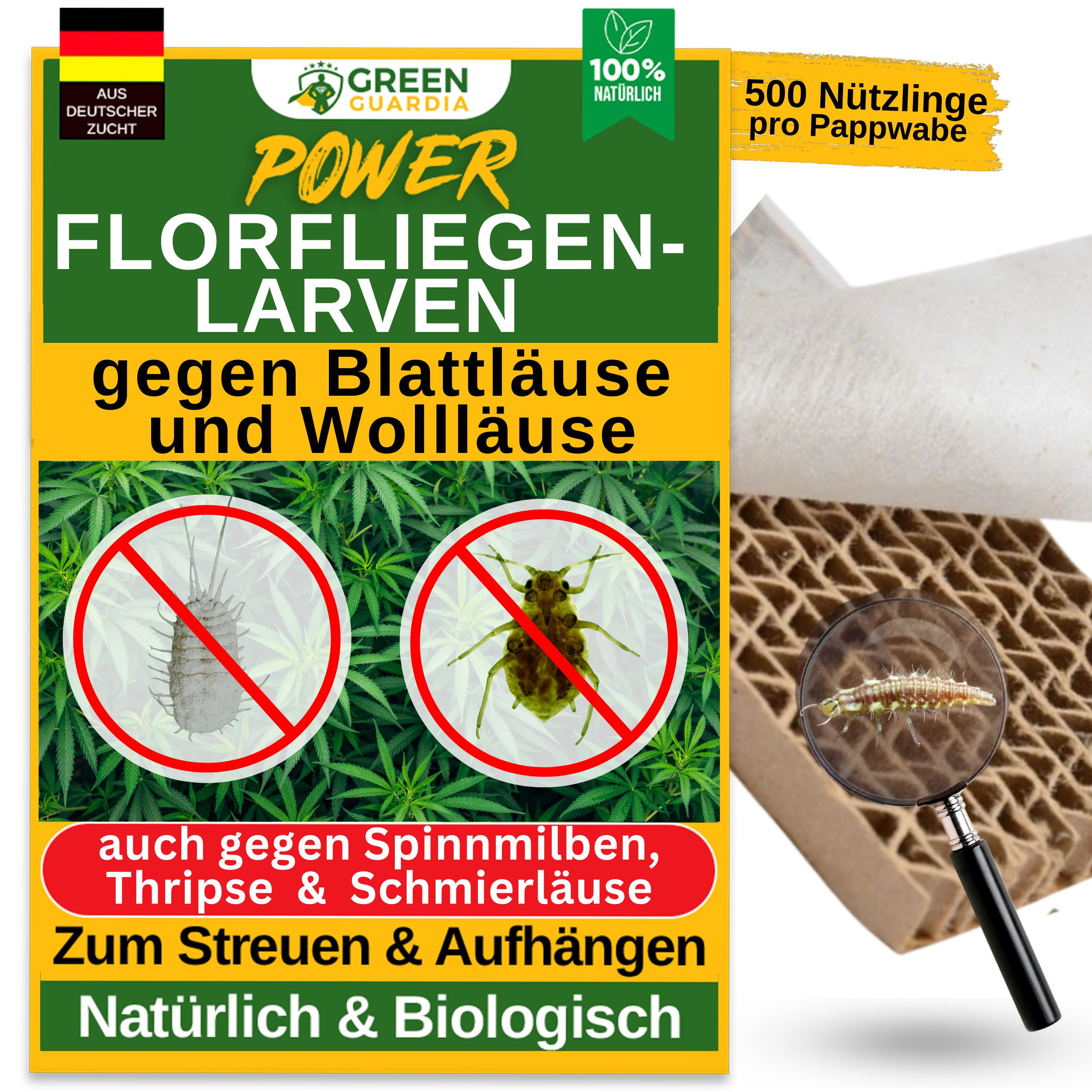
Number of cardboard honeycombs

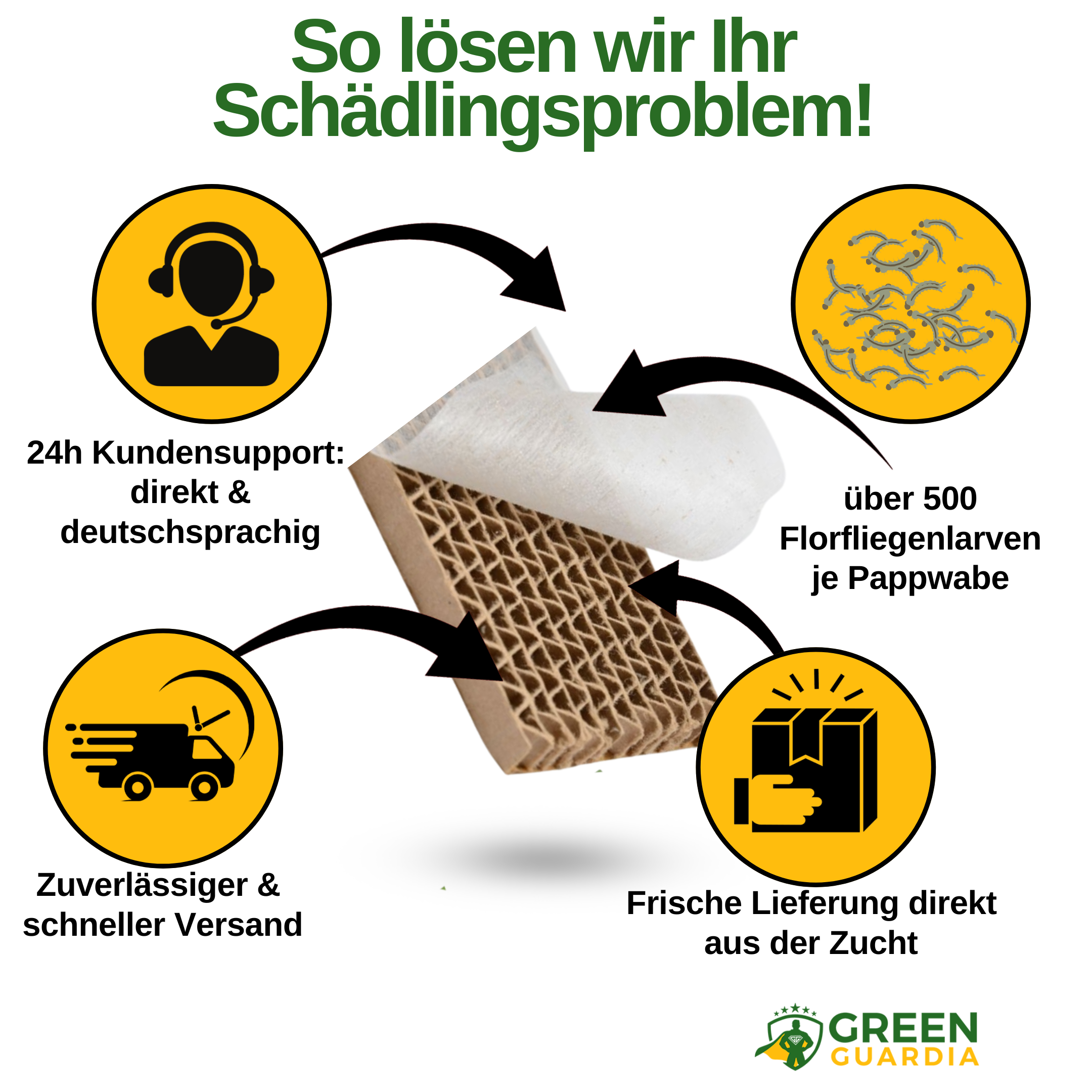

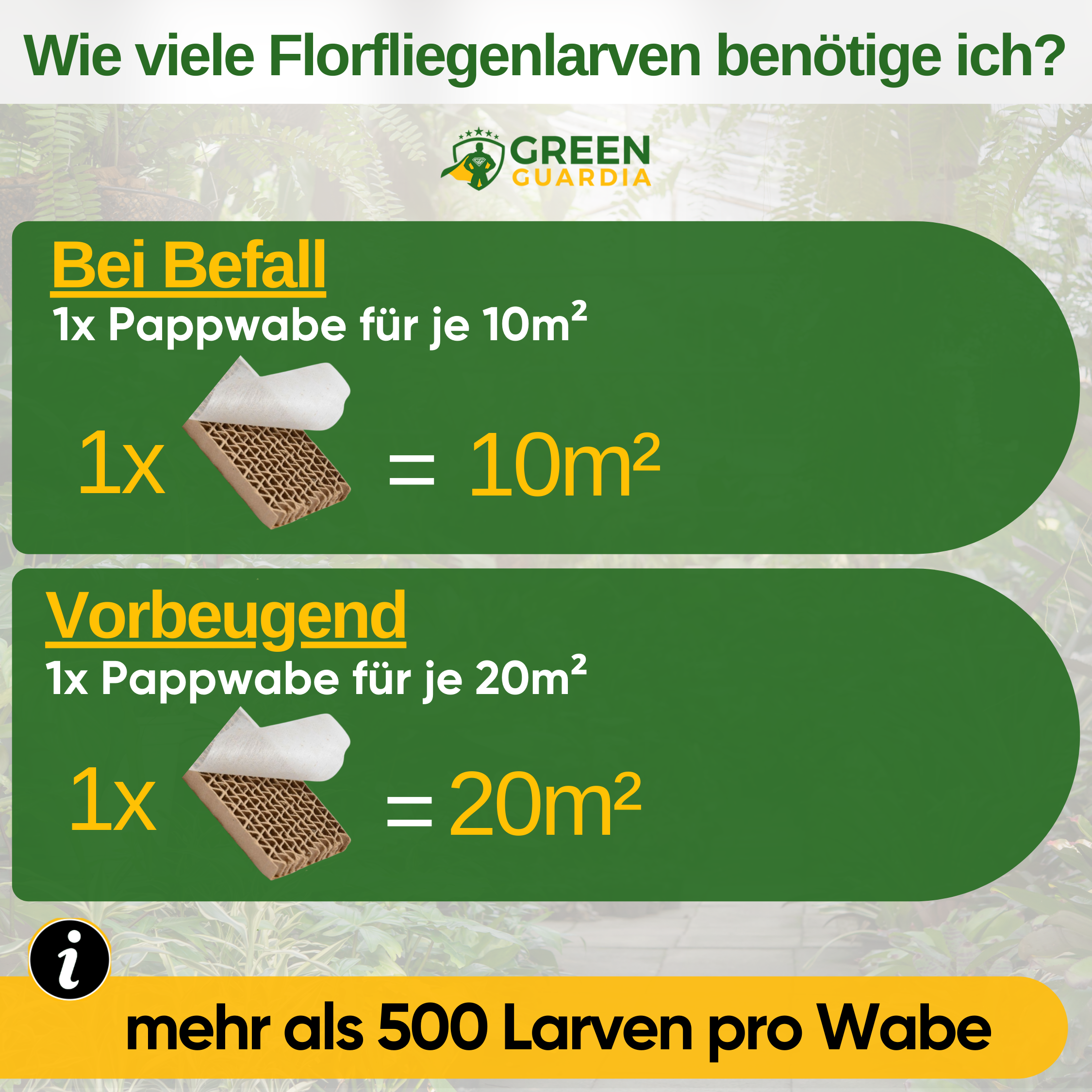
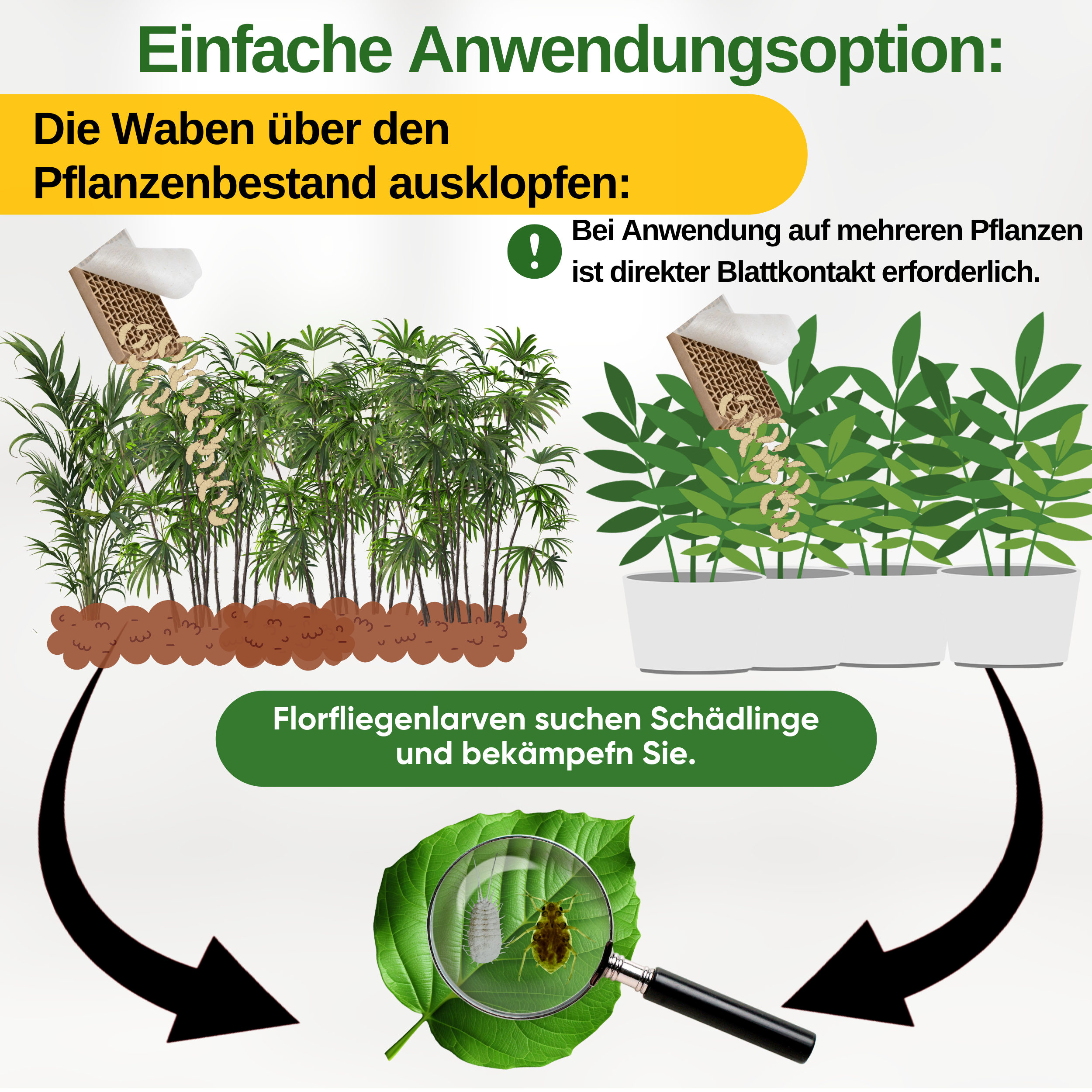

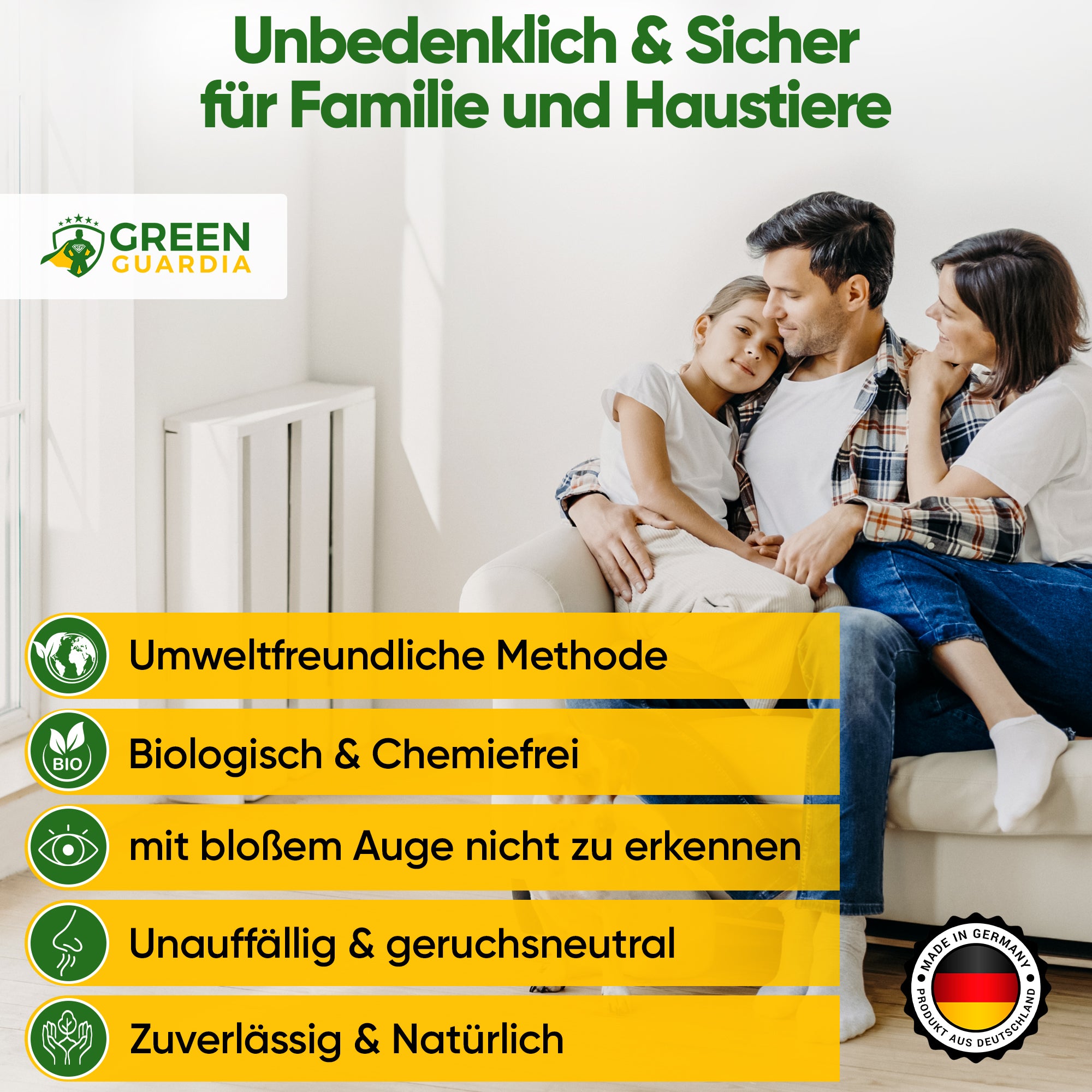
Lacewing larvae against aphids and mealybugs
-
100% natural help for aphids & co.
-
From German breeding – delivered quickly
-
Completely chemical-free – no residues
-
Discreet, effective & biologically sustainable
-
Safe for children and pets
In stock - in 2-4 working days with you
Was unsere Kund*innen sagen
-
Wirksamkeit
nicht wirksam sehr wirksam -
Anwendung
kompliziert kinderleicht -
Verträglichkeit
bedenklich sehr sicher
Lieferoption wählen & clever sparen:



Choose options
-
100% natural help for aphids & co.
-
From German breeding – delivered quickly
-
Completely chemical-free – no residues
-
Discreet, effective & biologically sustainable
-
Safe for children and pets
In stock - in 2-4 working days with you
Was unsere Kund*innen sagen
-
Wirksamkeit
nicht wirksam sehr wirksam -
Anwendung
kompliziert kinderleicht -
Verträglichkeit
bedenklich sehr sicher
Lieferoption wählen & clever sparen:



-
100% natural help for aphids & co.
-
From German breeding – delivered quickly
-
Completely chemical-free – no residues
-
Discreet, effective & biologically sustainable
-
Safe for children and pets
In stock - in 2-4 working days with you
Was unsere Kund*innen sagen
-
Wirksamkeit
nicht wirksam sehr wirksam -
Anwendung
kompliziert kinderleicht -
Verträglichkeit
bedenklich sehr sicher
Lieferoption wählen & clever sparen:



Lacewing Larvae Against Aphids & Mealybugs – Natural Help from Cardboard Honeycomb
GREEN GUARDIA lacewing larvae in cardboard honeycombs offer a fast, effective, and chemical-free solution for controlling aphids, mealybugs, thrips, and spider mites . It's particularly easy to use: The larvae are shaken out directly onto the infested plants – no preparation or waiting required.
Each honeycomb contains approximately 500 lacewing larvae in various stages of development, which immediately begin targeted pest control after release.
EFFECTS AND BENEFITS AT A GLANCE
- Extremely voracious larvae – known as “aphid lions”
- Fast action without chemicals or residues
- One cardboard honeycomb is sufficient for up to 10 m² in case of acute infestation, and for up to 20 m² as a preventative measure
- Suitable for houseplants, balconies, raised beds, greenhouses and the garden
- Also suitable for sensitive plants such as cannabis
HOW TO USE THE CARDBOARD HONEYCOMBS CORRECTLY
- Apply directly: Carefully shake the honeycomb over the affected plants – as close to the affected areas as possible.
- Note the temperature: The larvae need at least 12 °C, 18–30 °C is optimal for active development.
- No chemicals: Avoid using chemical pesticides 6 weeks before and during application.
- Remove ants: Ants can protect pests such as aphids and should be eliminated beforehand.
- Duration of effect: The larvae begin hunting pests immediately after shaking out – visible effects often follow within a few days.
APPLICATIONS FOR GREEN GUARDIA LADYWING LARVAE IN CARDBOARD HONEYCOMBS
- Houseplants & ornamental plants: Biological pest control for indoor spaces – without chemicals
- Garden & Greenhouse: Effective against pests in vegetable and ornamental plant crops
- Balcony & Terrace: Suitable for potted plants, container cultures and raised beds
- Cannabis plants: Gentle on the plant – strong against pests
- Agricultural use: Environmentally friendly alternative for large areas
FLORFLIEGENLARVEN IN PAPPWABEN – NATÜRLICH GEGEN BLATTLÄUSE, WOLLLÄUSE & CO.
Blattläuse, Wollläuse, Thripse und Spinnmilben können Pflanzen massiv schwächen – ob im Wohnzimmer, auf dem Balkon oder im Gewächshaus. Die GREEN GUARDIA Florfliegenlarven in Pappwaben bieten eine effektive, biologische und rückstandsfreie Lösung zur Schädlingsbekämpfung – ganz ohne Chemie.
Die Ausbringung ist kinderleicht: Einfach die Wabe vorsichtig über den Pflanzen ausschütteln – und die hungrigen „Blattlauslöwen“ übernehmen den Rest. Ideal geeignet für Zimmerpflanzen, Garten, Hochbeet, Balkon & professionelle Kulturen.
WARUM SIND FLORFLIEGENLARVEN SO EFFEKTIV?
Die Larven der Florfliege gelten als besonders gefräßig – schon wenige Stunden nach dem Schlüpfen beginnen sie aktiv mit der Jagd auf Schädlinge. Blattläuse, Wollläuse, Thripse und Spinnmilben werden zuverlässig gefressen. Nach erfolgreicher Arbeit verschwinden die Larven rückstandslos.
SO FUNKTIONIERT DIE PAPPWABEN-ANWENDUNG
- Jede Wabe enthält ca. 500 Florfliegenlarven in verschiedenen Entwicklungsstadien
- Einfach direkt über befallenen Pflanzen ausschütteln – z. B. in Blattachseln oder ins Substrat
- Bei 12–30 °C sind die Bedingungen optimal für die Larvenentwicklung
- Keine chemischen Pflanzenschutzmittel 6 Wochen vor & während der Anwendung verwenden
- Eine Wabe reicht für bis zu 10 m² bei akutem Befall oder 20 m² vorbeugend
EINSATZBEREICHE DER GREEN GUARDIA FLORFLIEGENLARVEN-PAPPWABE
- Zimmer- & Zierpflanzen: Sanfte Schädlingsbekämpfung im Innenbereich
- Cannabis-Kulturen: Effektiv und unbedenklich für sensible Pflanzen
- Garten & Gewächshaus: Ganzjährig einsetzbar bei geeigneten Temperaturen
- Landwirtschaft & Anzucht: Umweltfreundliche Lösung für größere Flächen ohne Rückstände
Blattläuse, Wollläuse, Thripse & Spinnmilben natürlich bekämpfen – mit GREEN GUARDIA Florfliegenlarven
Blattläuse, Wollläuse, Thripse und Spinnmilben zählen zu den häufigsten und lästigsten Pflanzenschädlingen im Garten, Gewächshaus oder an Zimmerpflanzen. Sie saugen Pflanzensäfte, schwächen das Wachstum und übertragen oft Krankheiten.
Mit GREEN GUARDIA Florfliegen bekämpfst du diese Schädlinge gezielt und effektiv – 100 % natürlich, rückstandsfrei und ohne Chemie.
Was machen diese Schädlinge so gefährlich?
- Blattläuse: Vermehren sich rasant und übertragen Viren.
- Wollläuse: Verstecken sich in Blattansätzen und hinterlassen klebrigen Honigtau.
- Thripse: Saugen an Blättern und Knospen – oft sichtbare silbrige Flecken.
- Spinnmilben: Bilden feine Gespinste und sorgen für Blattverfärbungen und -abwurf.
So beugst du einem Befall vor
- Regelmäßig kontrollieren: Blätter, Blattunterseiten und Triebe frühzeitig auf Schädlingsanzeichen prüfen.
- Pflanzen stärken: Gesunde Pflanzen sind weniger anfällig – achte auf Nährstoffe & Bodenqualität.
- Luftzirkulation verbessern: Vor allem in Innenräumen oder Gewächshäusern wichtig.
- Biologische Nützlinge einsetzen: GREEN GUARDIA Florfliegenlarven und Raubmilben ergänzen sich ideal.
🌱 Tipp: Die beste Wirkung erzielst du bei Temperaturen ab 12 °C. Kombiniere bei starkem Befall zusätzlich mit Florfliegenlarven oder Raubmilben für maximale Ergebnisse.

German breeding
Beneficial insects from controlled German breeding – quality you can rely on

Expert advice
Application tips and support from our experts – targeted and effective.

Quick help
Our beneficial insects are ready for immediate use and provide targeted help in the event of acute infestation in the house or garden.

Natural & safe
Safe for everyday use – absolutely risk-free for children, pets and plants.
We let our customers speak.

Natural pest control
At GREEN GUARDIA you will find the right natural solution for every pest problem – completely without chemicals.
Whether parasitic wasps against moths, predatory mites against spider mites or nematodes against fungus gnats and snails – our beneficial insects provide reliable help in the house, garden or greenhouse.
As specialists in biological pest control, we stand for quality, innovation and sustainable impact – in harmony with nature, people and animals.

Expert advice – Personal & practical
Our expert advisors will support you with targeted application tips and many years of experience in natural pest control. Whether you have questions about application, combining different beneficial organisms, or selecting the right product – we'll help you quickly and competently.
FAQ Lacewings
Do you have questions about our products, their use, or shipping? Here you'll find the most important answers at a glance. If anything remains unclear, please feel free to contact us!

Lacewing larvae, also called "aphid lions," are natural predators of aphids, mealybugs, thrips, and other pests. They feed exclusively on these pests and naturally reduce infestations.
The cards each contain over 50 lacewing eggs in various stages of development. The larvae hatch after a few days and immediately begin searching for pests.
Yes, lacewing larvae are completely harmless to humans, pets, and plants. They leave no residue and disappear after their work is done.
Lacewing larvae are suitable for the natural control of aphids, mealybugs, mealybugs, thrips and spider mites.
The hatched larvae are only 1–2 mm in size and often hide on the undersides of leaves. Their activity usually only becomes apparent when the pest population declines.
Depending on temperature and humidity, the larvae hatch within 1 to 5 days and remain active for about 2–4 weeks.
You will receive carrier cards with lacewing eggs that can be hung or laid out directly next to the plant.
No – they contain eggs in various stages of development. The larvae hatch in the following days.
It is best to do this at the first sign of pest infestation – this way the beneficial organisms can intervene early.
Ideally, use immediately. Short-term storage for 1–2 days at 8–12 °C is possible.
Usually within 2-4 working days – depending on temperature and freshness.
One card is sufficient for up to 2 m² of plant area. For more severe infestations or larger areas, use multiple cards.
Immediately after receiving the cards, hang them evenly on the affected plants or place them on the substrate – preferably near the leaves.
At 15 °C after about 5–7 days, at 20 °C after just 2–3 days.
Leave hanging for at least two weeks so that all larvae can hatch and become active.
In case of severe or recurring infestation, a second application after 2-3 weeks is recommended.
Yes – for example, on a balcony, terrace, or in the garden. However, direct sunlight and heavy rain should be avoided.
No – the cards are ready to use. Simply place them, and the hatching happens automatically.
The newly hatched larvae are barely visible to the naked eye. They begin hunting pests immediately after hatching and only become more clearly visible later.
Already after 5–10 days, depending on temperature, plant species and pest density.
Yes – ideal for indoor spaces, conservatories or greenhouses.
Yes – lacewings combine well with parasitic wasps or predatory mites.
The larvae eat pests, later pupate or disappear on their own – leaving no residue.
Yes – they are usually made of biodegradable material and can be disposed of with organic waste.







